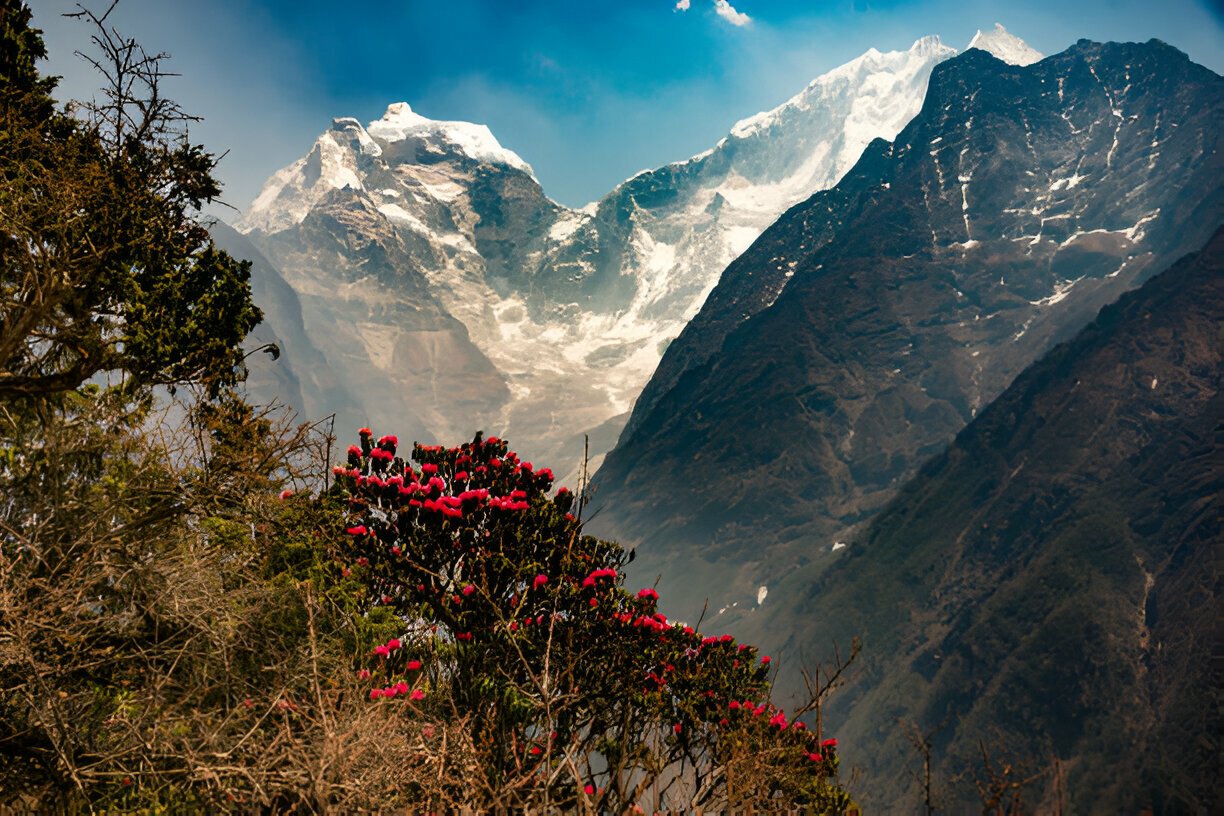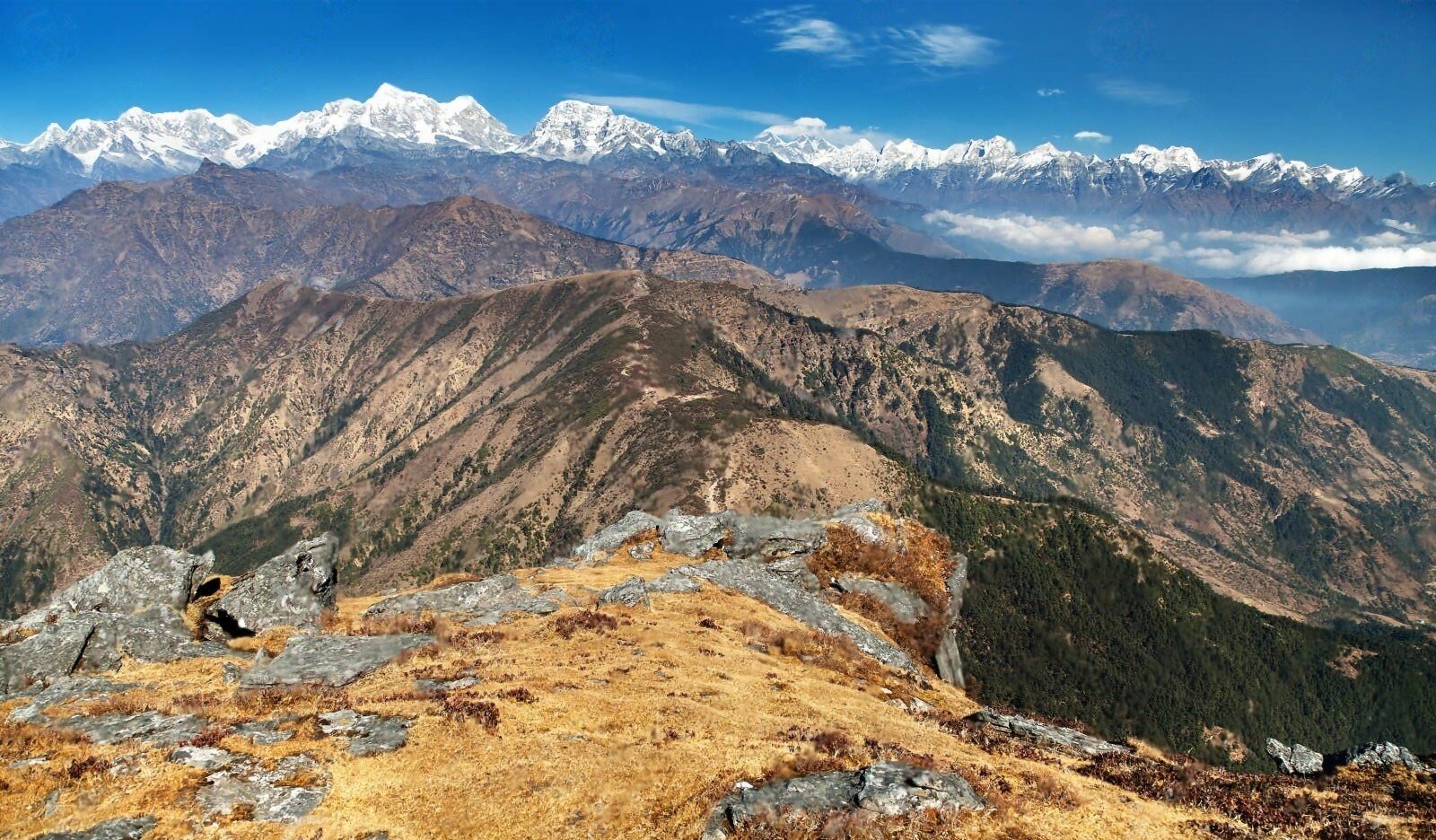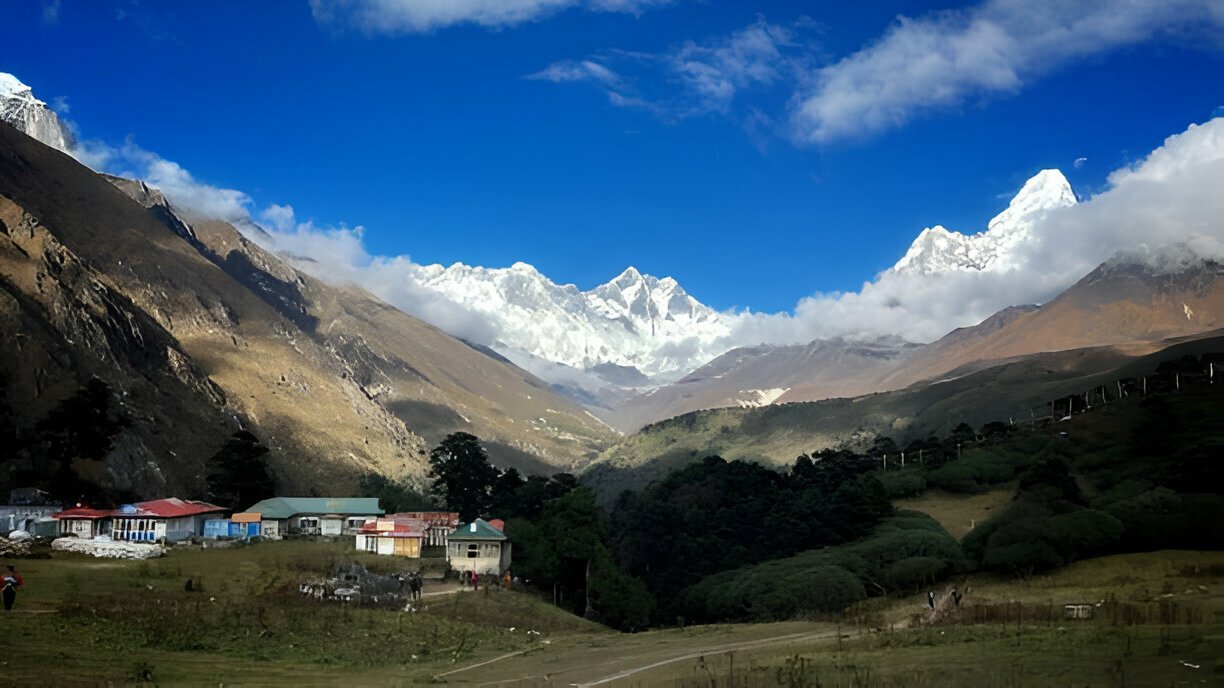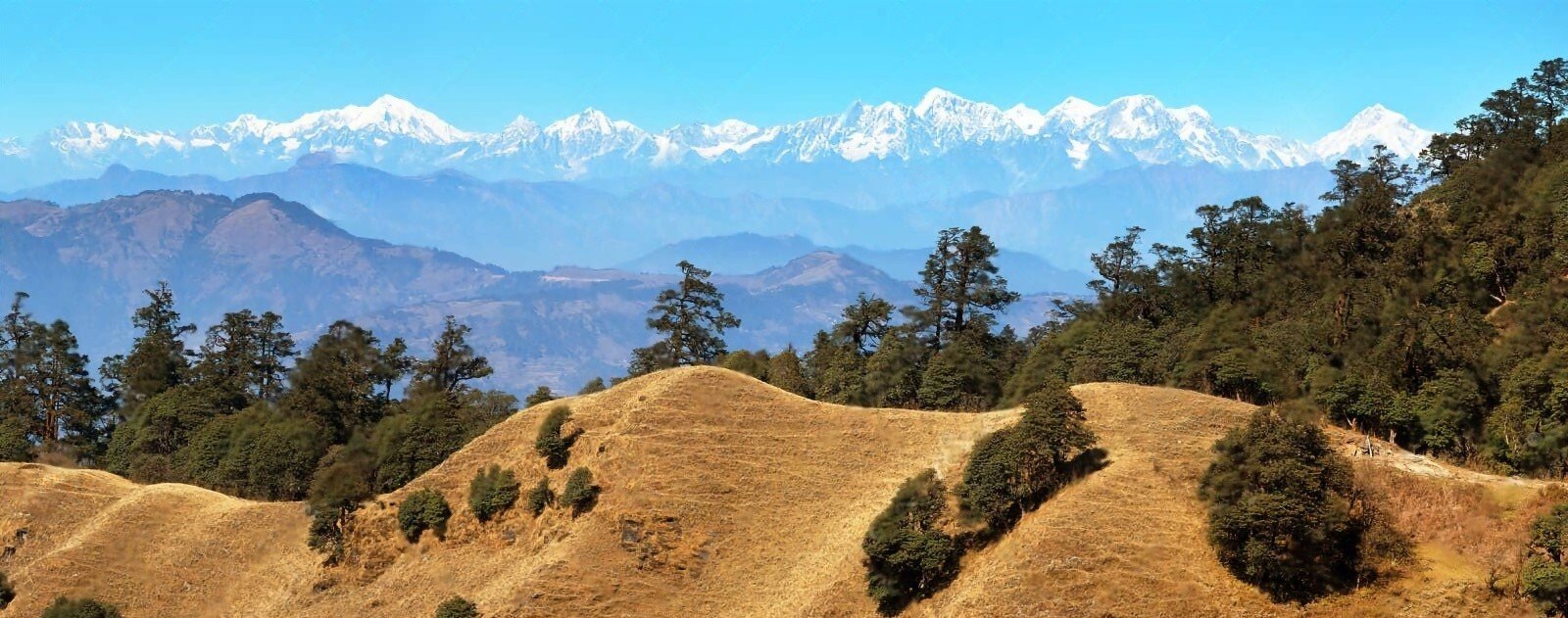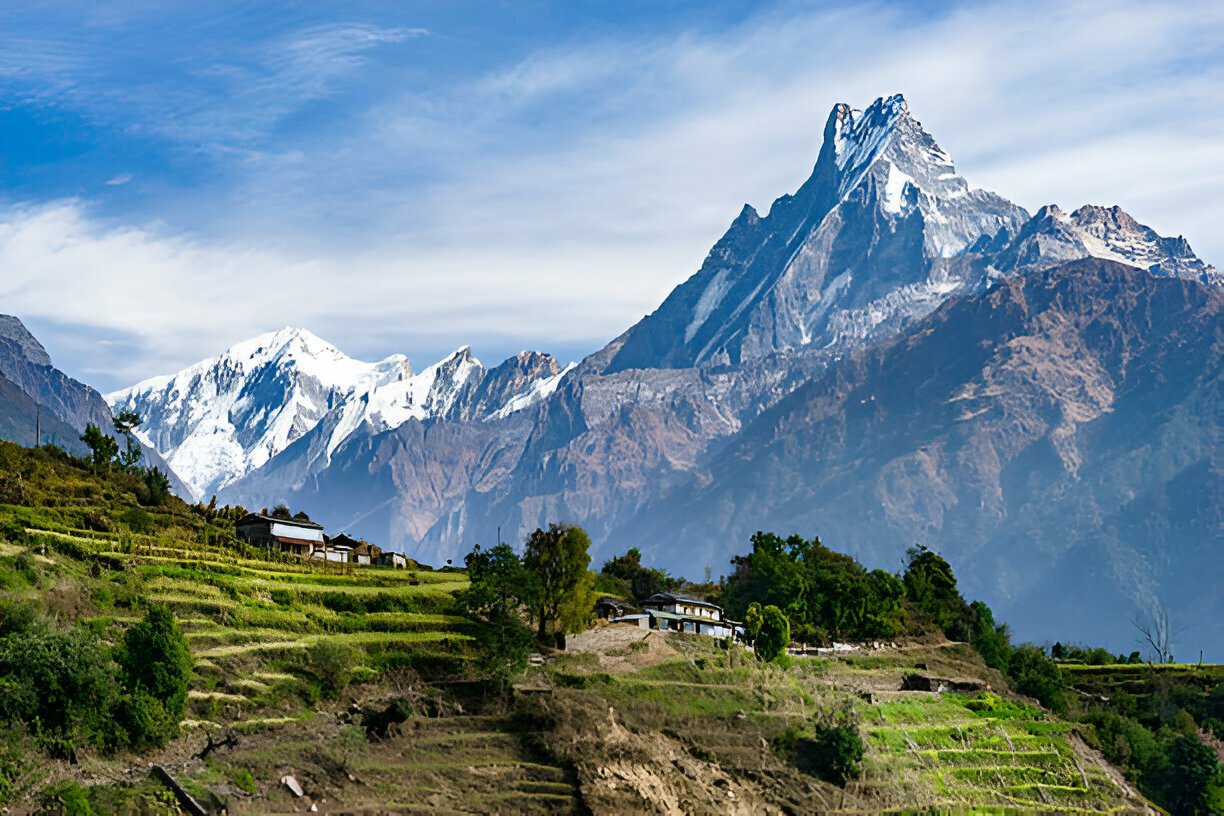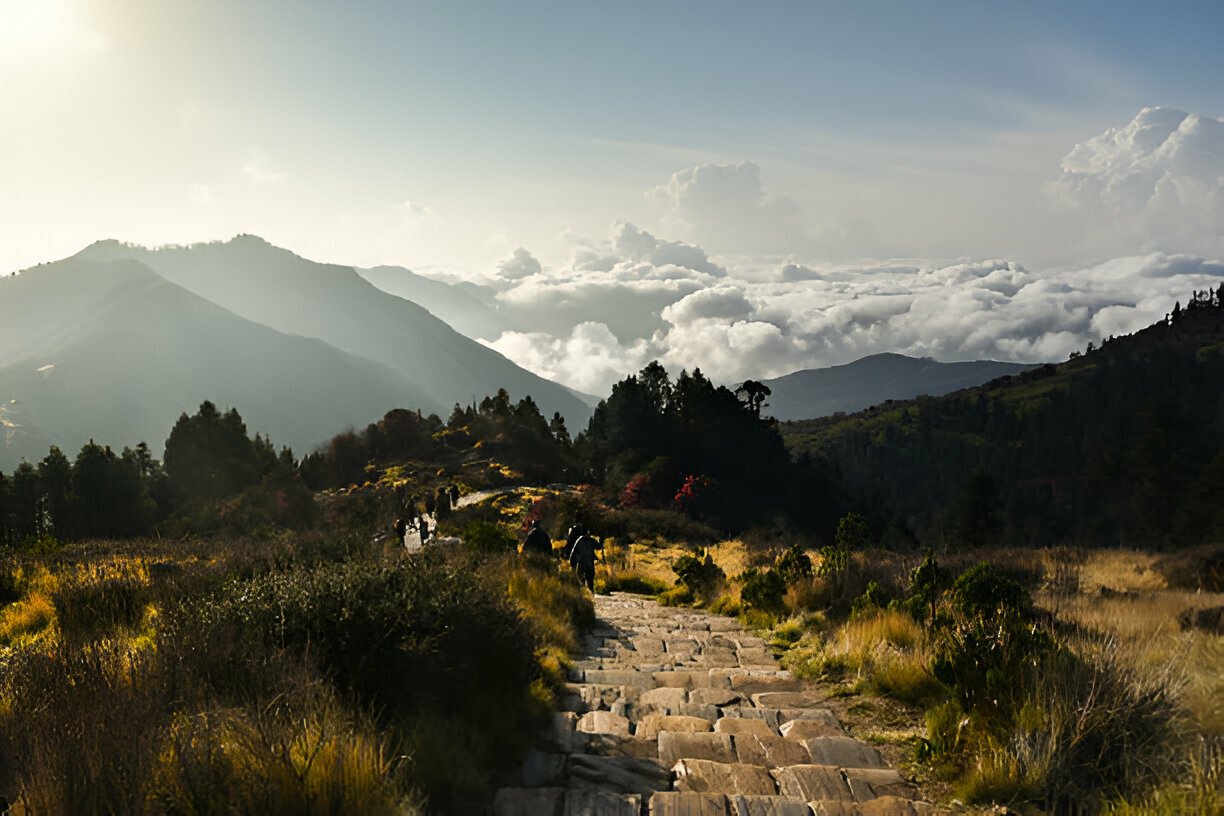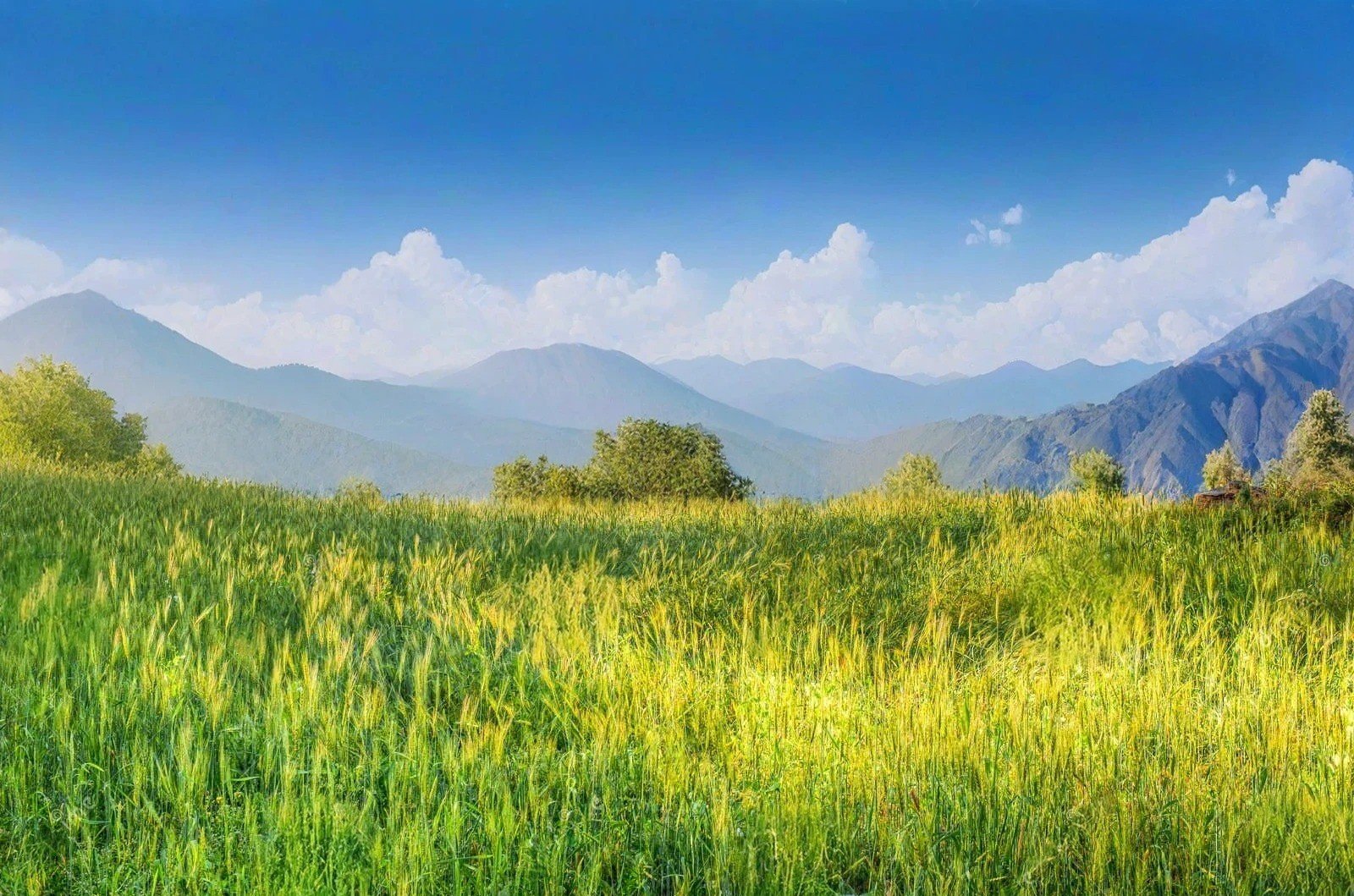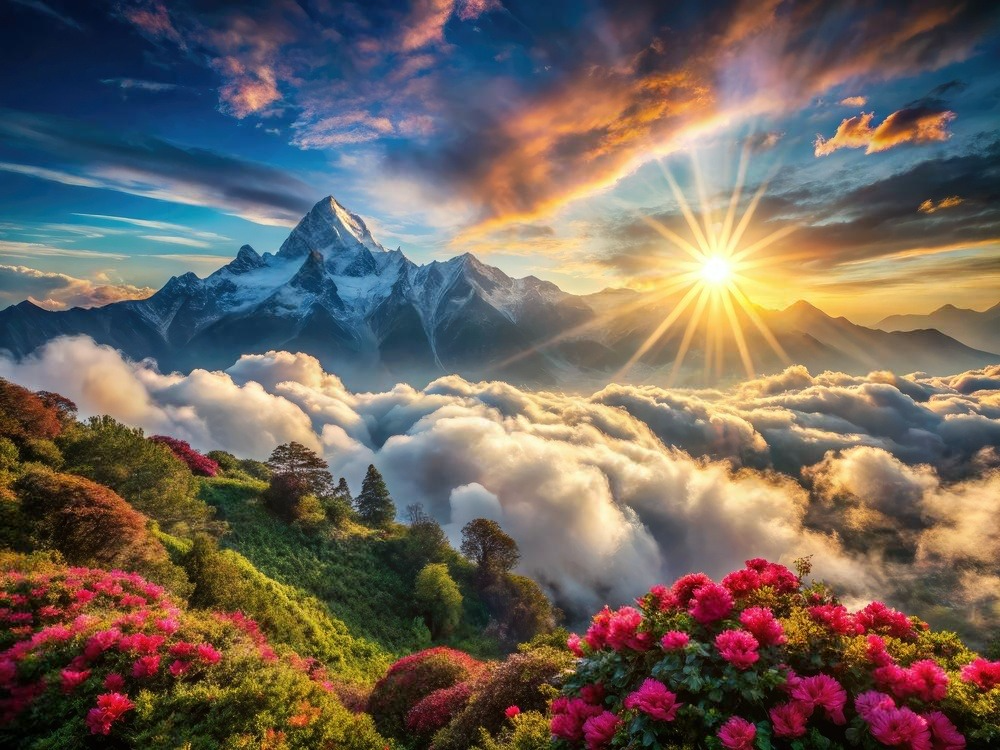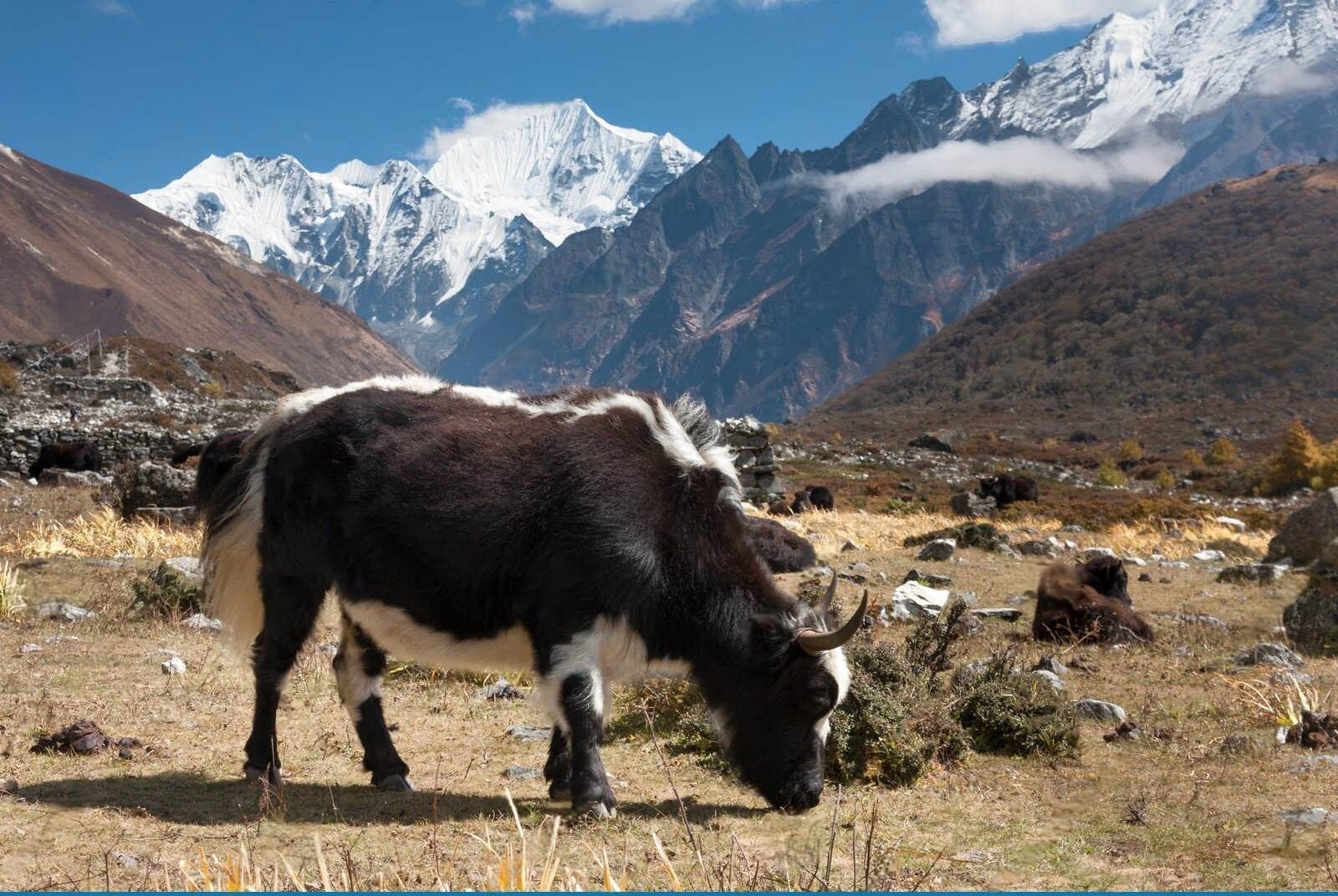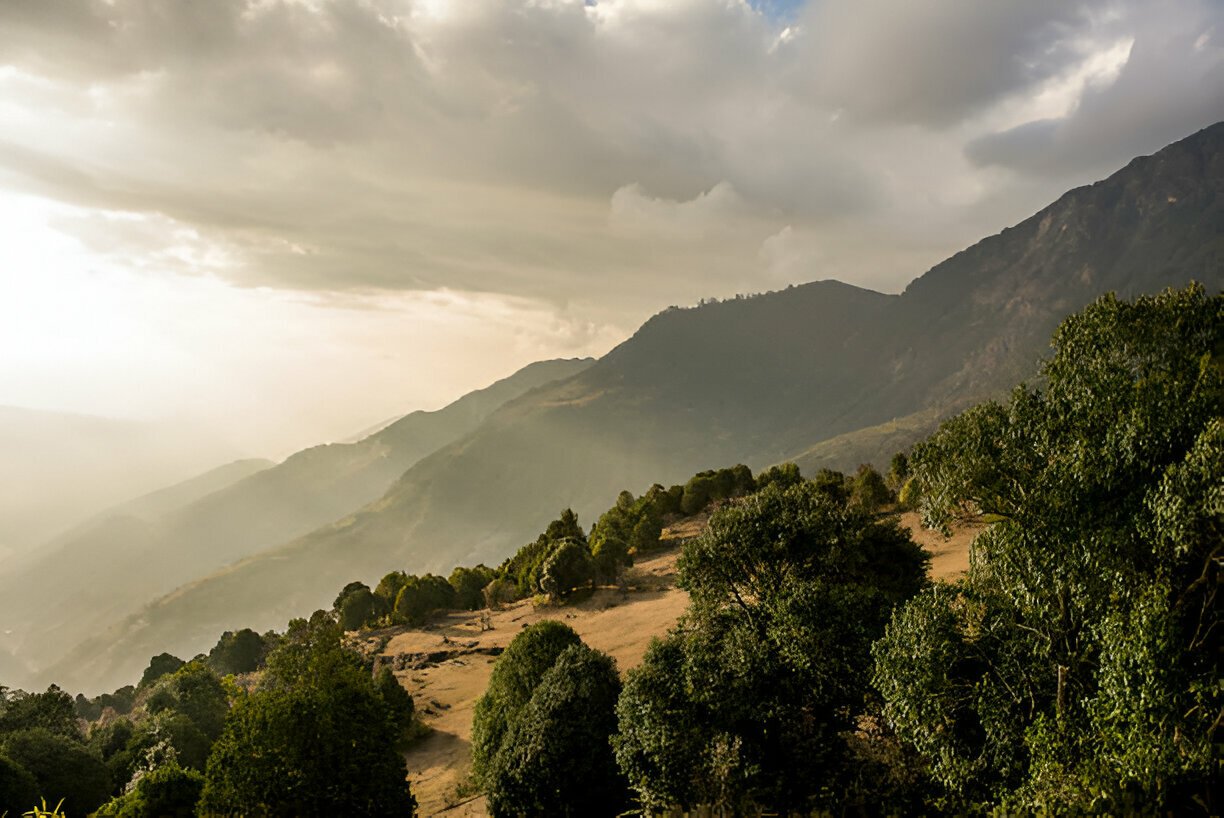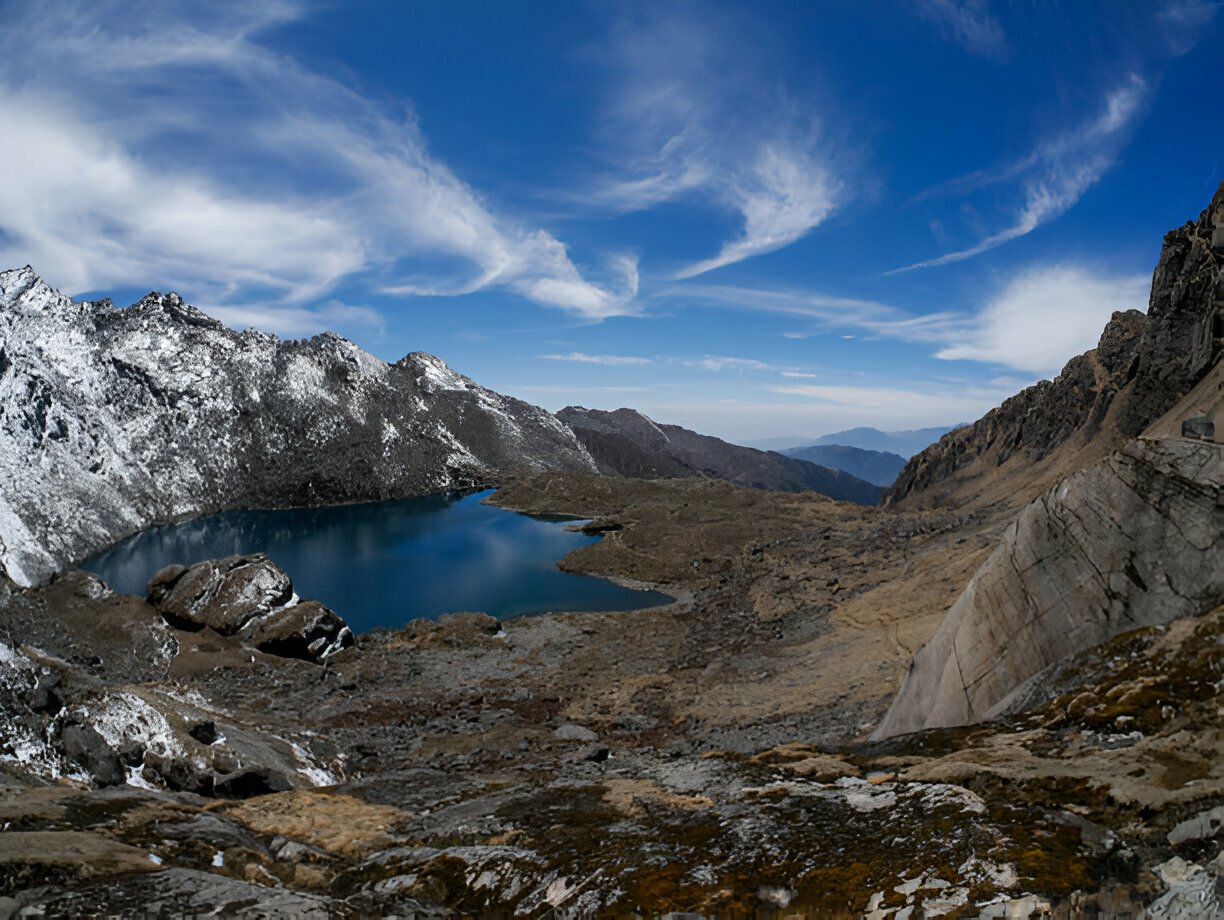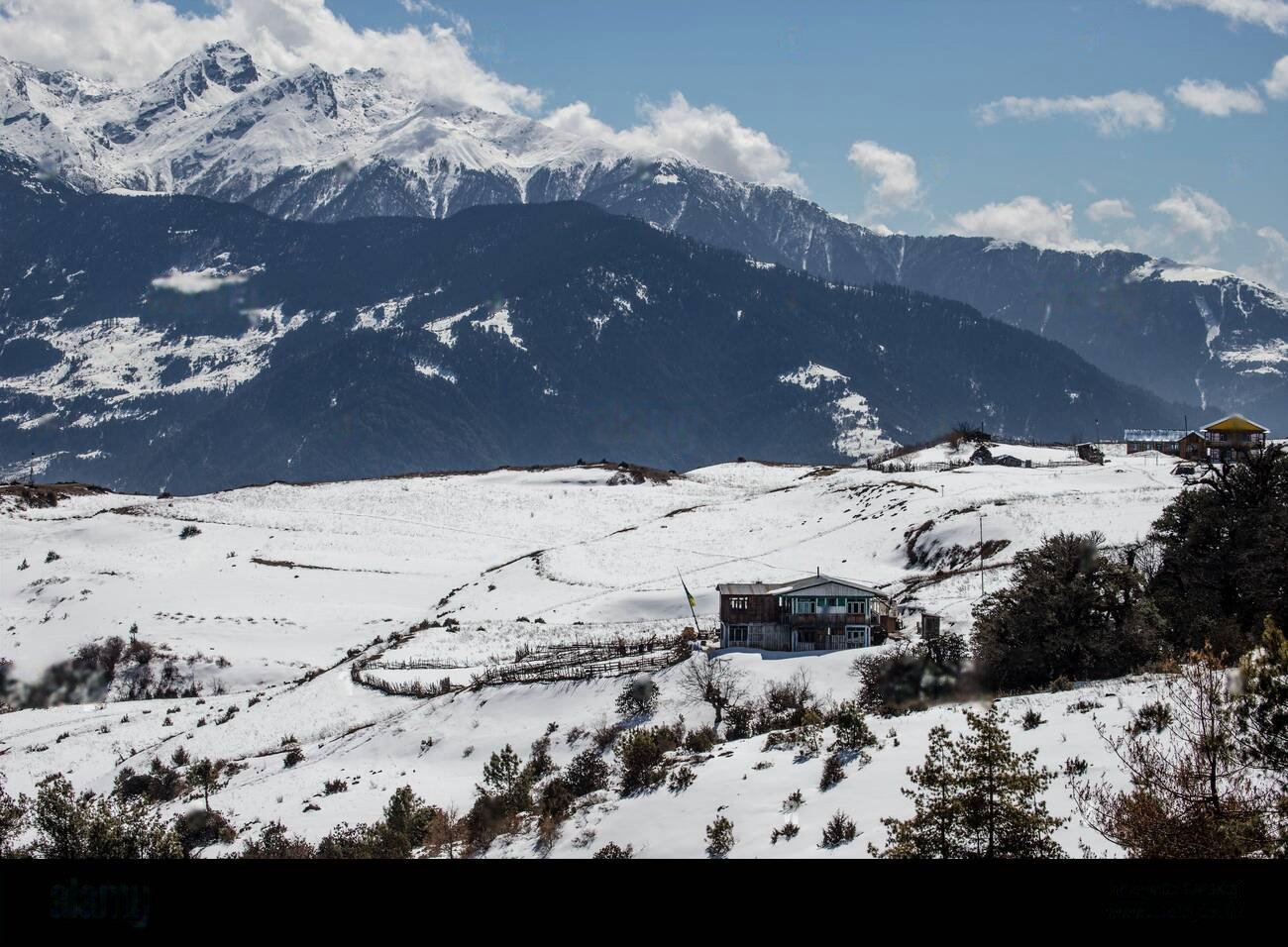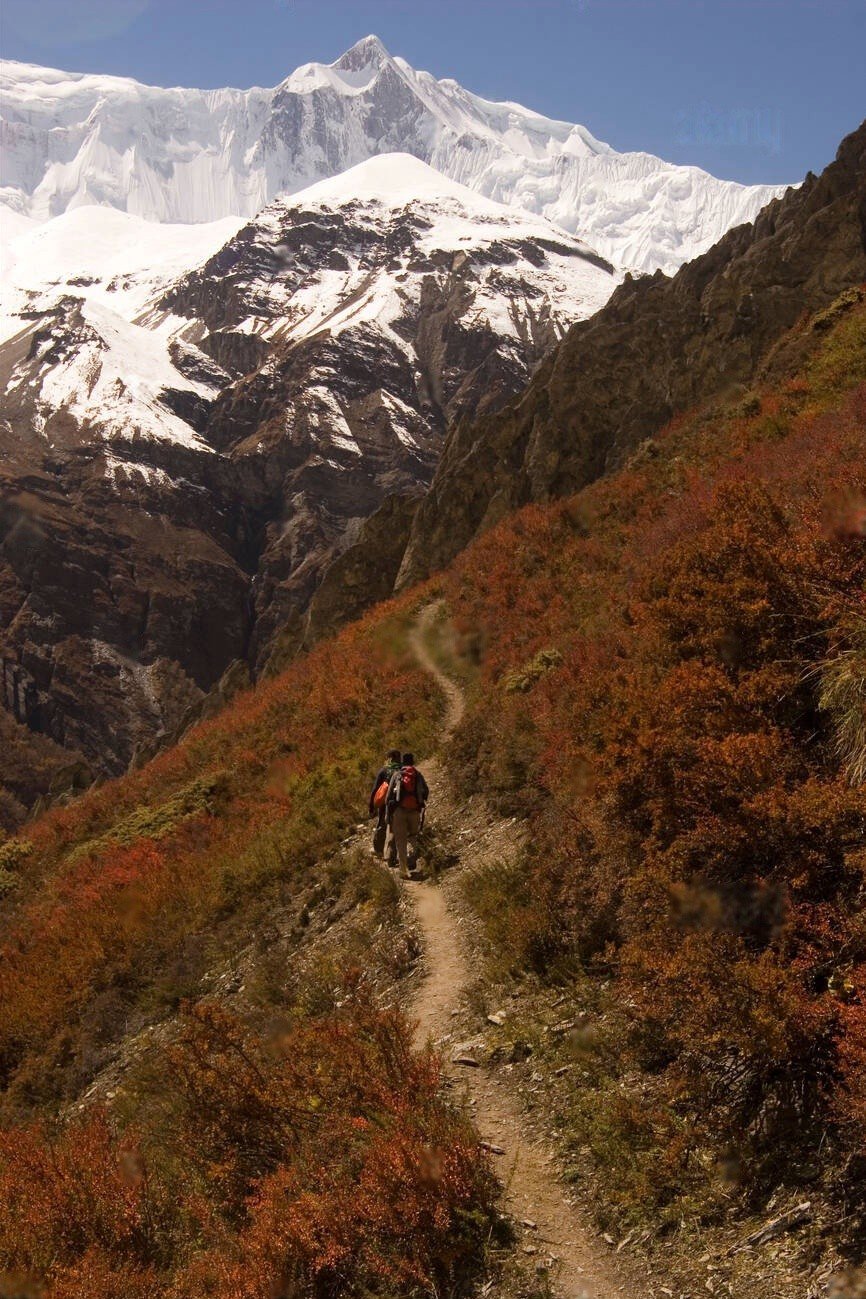 About this Trip
About this Trip
The Tilicho Lake Trek represents a perfect balance of adventure, natural grandeur, and cultural discovery, offering what many experienced trekkers consider one of the most rewarding experiences in the entire Himalayan region. What sets this trek apart is its ability to combine the thrill of high-altitude exploration with a profound sense of achievement in reaching one of the world's most spectacular alpine lakes in its remote mountain setting.
The trek follows a thoughtfully varied route that can either integrate with the classic Annapurna Circuit or function as a magnificent standalone journey. Beginning in the lush, subtropical landscapes of the lower Marsyangdi Valley, the trail ascends through changing ecological zones, passing traditional villages and terraced farmland before entering the arid, high-altitude landscapes that characterize the Manang region. This dramatic transition creates a sense of journey through multiple worlds within a relatively short distance, with each day revealing new environments and perspectives.
The approach to Tilicho Lake itself presents a memorable adventure that tests both physical abilities and determination. The infamous "landslide area" before Tilicho Base Camp requires careful navigation across steep, unstable scree slopes where narrow trails have been cut into the mountainside, creating one of the most thrilling sections of trekking in Nepal. This challenging passage serves as a fitting gateway to the extraordinary destination that awaits, making the arrival at the turquoise waters of Tilicho Lake all the more rewarding.
The cultural dimension of this trek adds tremendous depth to the natural experience. Villages along the route showcase the remarkable human adaptation to life in extreme mountain environments, with distinctive architectural styles, agricultural practices, and religious traditions. The influence of Tibetan culture becomes increasingly evident as you ascend into the higher regions, creating a fascinating cultural transition that parallels the changing landscape. Interactions with local communities offer insights into ways of life that have evolved in relative isolation over centuries.
Perhaps most distinctively, the Tilicho Lake trek creates a profound sense of achievement and connection to the Himalayan landscape. The moment of arrival at the lake's shores after days of challenging ascent, with the vast turquoise waters reflecting the surrounding snow-capped peaks, creates an almost spiritual experience that many trekkers describe as genuinely life-changing. The extraordinary setting—a massive alpine lake nestled in a high-altitude desert landscape ringed by some of the world's highest mountains—creates a scene of such dramatic beauty that it remains vivid in travelers' memories long after their journey concludes.
The Tilicho Lake Trek represents a perfect balance of adventure, natural grandeur, and cultural discovery, offering what many experienced trekkers consider one of the most rewarding experiences in the entire Himalayan region. What sets this trek apart is its ability to combine the thrill of high-altitude exploration with a profound sense of achievement in reaching one of the world's most spectacular alpine lakes in its remote mountain setting.
The trek follows a thoughtfully varied route that can either integrate with the classic Annapurna Circuit or function as a magnificent standalone journey. Beginning in the lush, subtropical landscapes of the lower Marsyangdi Valley, the trail ascends through changing ecological zones, passing traditional villages and terraced farmland before entering the arid, high-altitude landscapes that characterize the Manang region. This dramatic transition creates a sense of journey through multiple worlds within a relatively short distance, with each day revealing new environments and perspectives.
The approach to Tilicho Lake itself presents a memorable adventure that tests both physical abilities and determination. The infamous "landslide area" before Tilicho Base Camp requires careful navigation across steep, unstable scree slopes where narrow trails have been cut into the mountainside, creating one of the most thrilling sections of trekking in Nepal. This challenging passage serves as a fitting gateway to the extraordinary destination that awaits, making the arrival at the turquoise waters of Tilicho Lake all the more rewarding.
The cultural dimension of this trek adds tremendous depth to the natural experience. Villages along the route showcase the remarkable human adaptation to life in extreme mountain environments, with distinctive architectural styles, agricultural practices, and religious traditions. The influence of Tibetan culture becomes increasingly evident as you ascend into the higher regions, creating a fascinating cultural transition that parallels the changing landscape. Interactions with local communities offer insights into ways of life that have evolved in relative isolation over centuries.
Perhaps most distinctively, the Tilicho Lake trek creates a profound sense of achievement and connection to the Himalayan landscape. The moment of arrival at the lake's shores after days of challenging ascent, with the vast turquoise waters reflecting the surrounding snow-capped peaks, creates an almost spiritual experience that many trekkers describe as genuinely life-changing. The extraordinary setting—a massive alpine lake nestled in a high-altitude desert landscape ringed by some of the world's highest mountains—creates a scene of such dramatic beauty that it remains vivid in travelers' memories long after their journey concludes.
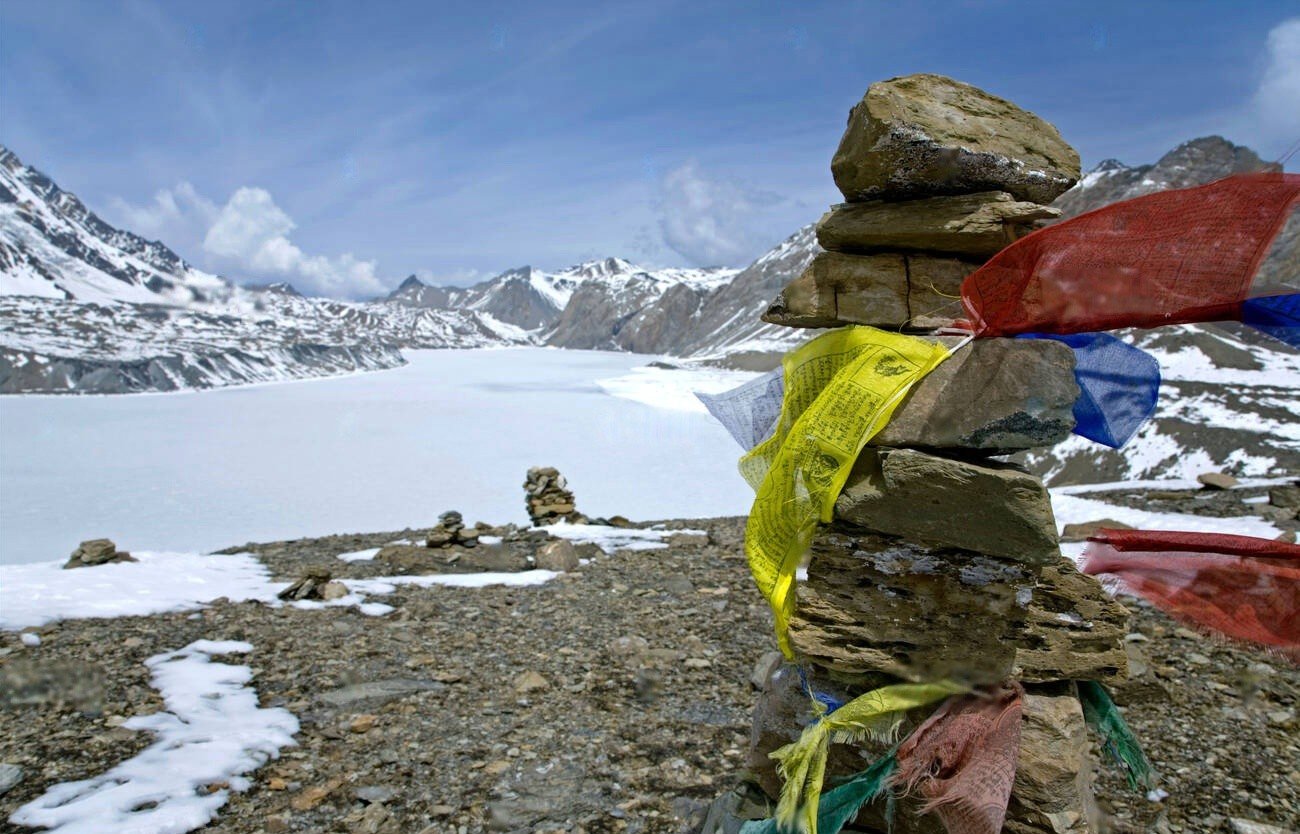
From $0
Price Varies from Group Size
Success
Here goes about why the success toast occurred.
 Itinerary
Itinerary
Arrival in Kathmandu (1,400m)
your hotel and attend a comprehensive pre-trek briefing with your guide, who will outline the journey ahead through this challenging high-altitude region. Take time to explore Kathmandu's cultural heritage sites and gather any last-minute supplies. The evening provides an opportunity to enjoy authentic Nepali cuisine and prepare mentally for the adventure ahead. Accommodation: Comfortable hotel in Kathmandu with modern amenities.
Kathmandu to Pokhara (820m)
After breakfast, depart for Pokhara by tourist bus, a scenic 6-7 hour journey through the middle hills of Nepal, following river valleys and passing through traditional villages. Alternatively, take a short 25-minute flight for magnificent aerial views of the Himalayan foothills. Upon arrival in Pokhara, enjoy the relaxed atmosphere of this lakeside city with optional boating on Phewa Lake or visits to local temples. Use the opportunity to glimpse the Annapurna range, including the distinctive peak of Machapuchare (Fishtail Mountain). Accommodation: Tourist-class hotel in Pokhara.
Pokhara to Chame (2,670m)
Take an early morning drive from Pokhara to Chame, a journey of approximately 8-9 hours on mountain roads that follow the Marsyangdi River valley. This long but scenic drive allows you to bypass the lower portions of the Annapurna Circuit trek, starting your journey at the administrative headquarters of Manang district. Chame offers your first real mountain views, with Annapurna II visible in the distance, and provides essential facilities before heading into more remote areas. The town features natural hot springs where you can relax after the long drive. Accommodation: Teahouse in Chame.
Chame to Pisang (3,200m)
Begin your trek with a 5-6 hour journey through beautiful alpine landscapes. The trail climbs through forests of pine and oak, following the Marsyangdi River upstream with increasing mountain views. Pass through the small settlement of Bhratang with its apple orchards before entering a spectacular steep-sided valley. As you approach Pisang, the landscape becomes increasingly dramatic with excellent views of Annapurna II and IV. Upper Pisang, situated on a ridge, offers superb panoramic views and your first real experience of traditional Tibetan-influenced architecture. Accommodation: Teahouse in Pisang.
Pisang to Manang (3,540m)
Today's 6-7 hour trek offers two route options: the more challenging higher route via Ghyaru and Ngawal (recommended for better views and acclimatization) or the easier lower route along the valley floor. The higher route provides spectacular panoramas of the Annapurna range and passes through ancient villages with remarkable Tibetan architecture. Both routes converge before reaching Manang, the principal settlement of the region and an important acclimatization point. This relatively large village offers facilities including a small cinema showing mountaineering documentaries, bakeries, and cultural programs. Accommodation: Teahouse in Manang with relatively good facilities.
Acclimatization day in Manang
A crucial rest day for acclimatization before ascending to higher elevations. Rather than complete inactivity, take a short acclimatization hike to either Ice Lake (4,600m) or Chongkor View Point (4,200m), following the "climb high, sleep low" principle that aids adaptation to altitude. These side trips offer spectacular views and help prepare your body for the higher elevations ahead. The afternoon provides time to explore Manang's monastery, attend presentations on altitude sickness prevention at the Himalayan Rescue Association post, or simply relax in the village's surprisingly good bakeries and coffee shops. Accommodation: Same teahouse in Manang.
Manang to Khangsar (3,745m)
Begin your journey toward Tilicho Lake by trekking 4-5 hours to Khangsar, a small traditional village less visited by trekkers. The trail climbs gradually out of Manang and follows an alternative route that branches off from the main Annapurna Circuit. The landscape becomes increasingly arid, with dramatic eroded cliffs and diminishing vegetation as you enter the rain shadow area. Khangsar offers traditional stone-built houses and views toward the Thorong La pass and the route to Tilicho Lake. Accommodation: Basic teahouse in Khangsar.
Khangsar to Tilicho Base Camp (4,150m)
Today's challenging 5-6 hour trek includes crossing the infamous "landslide area," the most technically demanding section of the route. After leaving Khangsar, the trail traverses high above the valley, cutting across steep scree slopes where the footing can be treacherous, particularly in dry conditions when the surface becomes loose and unstable. Proper footwear and trekking poles are essential for this section. Beyond this challenging passage, the trail continues to Tilicho Base Camp, a collection of simple lodges in a stark high-altitude landscape surrounded by towering peaks. Accommodation: Very basic teahouse at Tilicho Base Camp.
Tilicho Base Camp to Tilicho Lake (4,919m) to Tilicho Base Camp
Rise early for a challenging but rewarding round-trip expedition to Tilicho Lake. The 7-8 hour journey involves a steep, sustained climb over rocky terrain, potentially with snow and ice in certain seasons. The trail ascends through a series of switchbacks before reaching a ridge that offers the first views of the lake. Descend briefly to the shores of this enormous alpine lake, whose turquoise waters create a spectacular contrast with the surrounding barren landscape. The vast expanse of Tilicho Lake, set against a backdrop of towering peaks, creates one of Nepal's most memorable mountain vistas. After spending time by the lake, capturing photographs and absorbing the extraordinary scenery, return to Tilicho Base Camp by the same route. Accommodation: Same basic teahouse at Tilicho Base Camp.
Tilicho Base Camp to Yak Kharka (4,018m)
For those integrating this journey with the Annapurna Circuit, today's 6-7 hour trek connects back to the main trail by following an alternative route through high valleys toward Thorong La Pass. The path traverses high alpine terrain with minimal vegetation but spectacular mountain views, eventually descending slightly to reach Yak Kharka ("yak pastures"), a small settlement serving trekkers crossing the Thorong La Pass. For those doing the Tilicho Lake Trek as a standalone journey, an alternative return route would head back toward Manang. Accommodation: Basic teahouse in Yak Kharka.
Yak Kharka to Thorong Phedi (4,450m)
Continue the ascent with a relatively short but challenging 3-4-hour trek, gaining significant altitude as you approach Thorong La Pass. The trail follows the Jarsang Khola (river) before climbing steeply to Thorong Phedi ("foot of the hill"), the last settlement before the pass. This basic collection of teahouses serves as the staging point for crossing the pass. Those experiencing good acclimatization and energy levels might continue to High Camp (4,850m) to reduce the next day's crossing distance, though sleeping at this higher altitude increases the risk of altitude-related issues. Accommodation: Very basic teahouse at Thorong Phedi or High Camp.
Thorong Phedi to Muktinath (3,800m) via Thorong La Pass (5,416m)
The most challenging and rewarding day begins very early (usually around 4-5am) to cross Thorong La Pass before afternoon winds strengthen. The 7-9 hour journey ascends steeply from Phedi to the pass, which marks the highest point of the Annapurna Circuit at 5,416m. From this wind-swept saddle adorned with prayer flags, enjoy spectacular panoramic views of the surrounding mountains before beginning the equally challenging descent of more than 1,600m to Muktinath. The landscape changes dramatically as you enter the arid Mustang region on the western side of the pass. Muktinath is an important Hindu and Buddhist pilgrimage site with a temple complex featuring natural gas flames and 108 water spouts. Accommodation: Teahouse in Muktinath with improved facilities.
Muktinath to Jomsom (2,720m)
After visiting the sacred Muktinath Temple complex in the morning, trek 4-5 hours downhill through the dramatic Kali Gandaki valley, the world's deepest gorge between Annapurna and Dhaulagiri. Pass through the fascinating medieval village of Jharkot with its ancient fortress and monastery before descending to Jomsom, the administrative center of the Mustang region and a major travel hub. The area is famous for its apple orchards and distinctive local apple brandy. Accommodation: Comfortable teahouse or hotel in Jomsom.
Jomsom to Pokhara
Take an early morning flight from Jomsom to Pokhara (20 minutes), enjoying aerial views of the terrain you've spent the past two weeks traversing on foot. Weather in Jomsom can cause flight delays, so early departures are scheduled to maximize reliability. Alternative options include jeep transportation via a recently constructed road, though the journey is long and bumpy. Upon arrival in Pokhara, enjoy the comforts of urban amenities while processing the profound experiences of your high-altitude adventure. Accommodation: Tourist-class hotel in Pokhara.
Pokhara
Take a well-deserved rest day in Pokhara. Options include boating on Phewa Lake, visiting the World Peace Pagoda for panoramic views, exploring the International Mountain Museum, or simply relaxing in lakeside cafes and restaurants. This day allows time to reflect on your achievement in reaching one of the world's highest and most spectacular alpine lakes. Accommodation: Same hotel in Pokhara.
Pokhara to Kathmandu
Return to Kathmandu by tourist bus (6-7 hours) or a short flight (25 minutes). The afternoon in Kathmandu offers opportunities for souvenir shopping in Thamel or additional sightseeing. A farewell dinner provides a chance to celebrate your Tilicho Lake adventure with guides and fellow trekkers. Accommodation: Comfortable hotel in Kathmandu.
Departure from Kathmandu
Your Tilicho Lake adventure concludes with a transfer to Kathmandu International Airport for your departure flight. Depending on your schedule, you might have time for last-minute shopping or sightseeing in Kathmandu before leaving Nepal with memories of your journey to one of the world's highest and most spectacular mountain lakes.
 Services
Services
Includes
- Specialized bilingual guide familiar with the Annapurna and Tilicho Lake region
- Private Transport where applicable
- Flights between Jomsom and Pokhara
- Daily meals on the trek: breakfast, lunch, and dinner
- Services of an experienced guide and porter during the trek
- All essential trekking permits, including ACAP (Annapurna Conservation Area Permit) and TIMS
- Accommodation throughout the trek (teahouses)
Excludes
- Additional accommodation due to weather delays or early completion
- Comprehensive travel and medical insurance for the trek
- Gratuities for the guides, porters, and trekking support staff
- International flights and entry visa fees for Nepal
- Personal trekking equipment and gear (sleeping bags, down jackets, etc.)
- Extra food and drinks beyond the standard meals provided
- Hot showers and battery charging at teahouses (pay per use)
- Costs associated with emergency evacuation or alternate routes if needed
 Good to Know
Good to Know
This trek requires excellent physical fitness and prior high-altitude trekking experience is highly recommended. The landslide area between Khangsar and Tilicho Base Camp demands proper equipment including sturdy hiking boots with good ankle support and trekking poles. Temperatures at higher elevations can drop well below freezing; bring appropriate cold-weather gear including a quality sleeping bag rated to at least -15°C (5°F). Weather conditions can change rapidly; pack for multiple scenarios from warm sunshine to snow. Altitude sickness risk is significant; familiarize yourself with symptoms and never hesitate to descend if they appear. The lodges at Tilicho Base Camp are very basic with shared facilities and limited heating. For those continuing over Thorong La Pass, microspikes or similar traction devices are advisable in certain seasons when ice may be present. Water purification tablets or filters are essential as bottled water becomes unavailable at higher elevations. Carry sufficient cash as ATMs are only available in larger settlements like Manang and Jomsom. Build buffer days into your itinerary for weather delays, especially for the Jomsom flight which is frequently canceled due to strong winds.
Wildlife Encounters
Himalayan tahr and blue sheep (bharal) on rocky slopes
Pika (small rabbit-like mammals) in higher rocky areas
Himalayan marmots in alpine meadows
Various pheasant species including the colorful Danphe (Nepal's national bird)
Lammergeier (bearded vulture) and Himalayan griffon soaring on thermals
Golden eagles hunting over high ridges
Snow leopards (extremely rare sightings in remote areas)
Various small birds adapted to high-altitude environments
Butterflies and wildflowers in lower regions during spring
Himalayan weasels and martens in forested sections
 Reviews
Reviews
 FAQs (Frequently Asked Questions)
FAQs (Frequently Asked Questions)
Your queries are answered.
How difficult is the Tilicho Lake Trek?
Moderate to challenging, requiring good fitness and proper acclimatization. The landslide area before Tilicho Base Camp presents technical challenges with loose scree slopes. Maximum altitude of 4,919m (or 5,416m if crossing Thorong La) carries significant altitude sickness risk.
Best time to visit?
Late September to November offers the most stable weather and clearest views. April to May provides spring flowers at lower elevations but can have hazier skies. Winter (December-February) brings snow and extreme cold. Summer monsoon (June-September) has higher precipitation risks, especially in lower regions.
Can it be done separately from the Annapurna Circuit?
Yes, it can be done as a standalone trek or integrated into the Annapurna Circuit. The standalone version typically starts from Besisahar or Chame and returns via Manang, while the integrated version continues over Thorong La Pass.
What permits are needed?
Annapurna Conservation Area Permit (ACAP, approximately $30) and TIMS (Trekkers' Information Management System) card (approximately $10), available through trekking agencies or in Kathmandu/Pokhara.
How dangerous is the landslide area?
Requires careful attention but is passable with proper equipment (good boots, trekking poles) and caution. The trail crosses steep scree slopes where footing can be unstable. Most dangerous in dry conditions when surface material is looser.
How good is accommodation quality?
Basic teahouses throughout with facilities becoming increasingly rudimentary at higher elevations. Tilicho Base Camp offers very simple accommodation with minimal amenities. Manang and Jomsom provide relatively better facilities.
Is Wi-Fi and connectivity available?
Available in larger settlements like Manang and Jomsom but essentially non-existent at Tilicho Base Camp and higher elevations. Local SIM cards work in lower regions but not in remote areas near the lake.
Does extra budget needed?
Approximately $15-20 daily for hot showers (where available), battery charging, and additional drinks/snacks. Higher elevations command premium prices due to transportation difficulties.
Can beginners attempt this trek?
Not recommended for first-time trekkers due to high altitude, technical challenges in the landslide area, and remote locations. Prior trekking experience, especially at altitude, is highly advisable.




